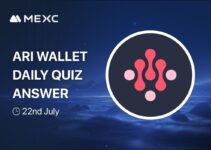Solana posts a 24‑hour gain after weekend on‑chain surge
Solana (SOL) advanced roughly 5% in the latest 24‑hour session, trading in the high $130s after a weekend of increased on‑chain activity and a high‑profile governance proposal. The price move follows strong transaction volume on a rising application and renewed debate among protocol developers over long‑term token issuance.

Market snapshot: price, supply and 2025 context
As of the most recent trading session in late 2025, SOL hovered near $138, reflecting a short‑term gain of approximately 5%. Twenty‑four‑hour trading turnover remained elevated, consistent with growing participation across Solana’s ecosystem.
- Estimated market capitalization: roughly $77.5 billion.
- Circulating supply: around 559 million SOL of a roughly 614 million total supply.
- Peak reference: SOL previously traded near $293 in early 2025, underscoring the token’s wide intrayear price range.
The restart of meaningful on‑chain activity and a governance conversation about supply dynamics come amid a broader 2025 backdrop where institutional crypto allocation and application‑layer innovation are key market drivers. Developers and validators continue to navigate evolving staking economics, regulatory scrutiny, and demand for scalable, low‑cost infrastructure.
x402 weekend surge drives short‑term momentum
Activity on the x402 protocol spiked over the weekend, recording more than half a million transactions and measurable on‑chain volume. This uptick contributed to higher network throughput and renewed attention on Solana’s capacity to host fast, cost‑efficient applications.
Analysts tracking on‑chain metrics flagged rapid week‑over‑week growth for x402, citing both transaction count and new user interactions as indicators that application demand is increasing. For traders and market participants, the surge provided a tangible example of Solana’s performance advantages in high‑frequency use cases.
- Transaction volumes and new addresses on x402 rose sharply over the weekend.
- Higher activity has a secondary effect: it tends to lift fee generation, validator rewards and ecosystem visibility.
- Observers see early‑stage application growth as a leading indicator for future developer interest and capital inflows.
SIMD‑0411: proposed acceleration of disinflation
Concurrent with the application‑level momentum, Solana developers submitted SIMD‑0411 — a proposal designed to accelerate the protocol’s disinflation schedule. The draft would increase the annual disinflation rate and bring the terminal inflation target forward both in timing and magnitude.
Key elements of the proposal include:
- Doubling the current annual disinflation rate from approximately 15% to 30%.
- Lowering the projected inflation rate from roughly 4.18% toward a long‑term target of 1.5% faster than the existing schedule.
- Reducing future supply issuance by an estimated 22.3 million SOL under the revised trajectory.
Under the current model, Solana would reach the 1.5% terminal inflation level later in the decade; SIMD‑0411 seeks to move that milestone up by several years. Proponents argue the change would compress future issuance, potentially reducing sell‑side pressure and supporting token scarcity narratives.
Potential benefits highlighted by supporters
- Faster disinflation could sharpen supply fundamentals and improve long‑term valuation arguments.
- Greater issuance certainty may attract investors seeking clearer monetary policy within the protocol.
- Tighter supply growth could amplify the economic effects of on‑chain adoption and fee accrual to stakeholders.
Validator economics and decentralization concerns
Opponents and cautious observers point to potential downside for validator economics. Lower issuance translates into reduced staking rewards, which may change operator viability, especially for smaller validators working with thin margins.
One early analysis suggests that lower staking yields could make a subset of validators — estimated in some notes at several dozen nodes — economically marginal over a multi‑year horizon. If smaller validators exit the network, governance and validation could concentrate among larger operators, raising questions about decentralization and resilience.
- Lower reward rates can pressure smaller or geographically concentrated validators.
- A concentration of stake may create single‑point‑style dynamics that are at odds with decentralization goals.
- Mitigations could include multi‑year governance dialogues, adjustments to fee structures, or community incentives for smaller operators.
Governance process and community debate
SYSTEM proposals like SIMD‑0411 must progress through defined governance stages, including technical review, community discussion and, where applicable, validator voting. The governance timeline typically allows stakeholders to model economic outcomes, simulate validator cutover scenarios and propose amendments.
Community channels and developer forums are actively discussing trade‑offs. Some participants advocate for the accelerated disinflation as a necessary step toward a leaner token economy. Others request more gradual implementations or compensatory mechanisms to preserve validator participation.
Macro and market context for 2025
The broader crypto market in 2025 has been shaped by several themes relevant to Solana’s trajectory:
- Institutional allocation: Greater interest from institutional investors is driving larger, more liquid markets for major layer‑1 tokens.
- Application diversity: Growth in real‑world use cases, including DeFi, gaming, and composable financial services, increases demand for throughput and low fees.
- Regulatory evolution: Ongoing regulatory clarity in multiple jurisdictions is influencing custody, staking and product availability.
- Technology consolidation: Networks that demonstrate reliable performance and robust developer tooling are more likely to capture long‑term activity.
These conditions inform how market participants interpret both on‑chain activity and tokenomic proposals. In a higher‑demand environment, accelerated disinflation could have a magnified effect on price. Conversely, if staking economics deteriorate and validator participation declines, network health and developer confidence could be strained.
Scenarios to watch
As the community considers SIMD‑0411 and tracks application growth, several plausible scenarios could play out:
- Proposal adoption with mitigations: SIMD‑0411 passes with phased implementation or parallel incentives to shore up small validators.
- Proposal modification: Community feedback spurs an adjusted disinflation schedule or offsetting reforms to staking economics.
- Proposal rejection: Concerns about centralization or validator attrition lead to the proposal being withdrawn or voted down.
- Application‑led price support: Continued growth in apps like x402 drives fee accrual and organic demand that complements or supersedes tokenomic changes.
Investors and ecosystem participants should monitor validator metrics, effective staking yields, on‑chain fee income, and proposal amendments as high‑signal indicators for each scenario.
What comes next?
The coming weeks will be pivotal. Stakeholders can expect:
- Detailed economic modeling published by independent analysts and community contributors.
- Governance discussions and potential formal votes according to Solana’s upgrade calendar.
- Further on‑chain data releases from application teams and analytics providers documenting x402 adoption trends.
Market participants should weigh short‑term price movements against structural changes to supply and validator economics. For long‑term observers, the combination of rising application usage and a definitive tokenomic path could be a decisive factor in Solana’s competitive positioning by the close of 2025.
Conclusion
Solana’s recent 5% uptick was driven by a mix of strong weekend application activity and an active governance proposal that would accelerate disinflation and reduce future SOL issuance. SIMD‑0411 introduces a meaningful shift in monetary policy, promising tighter supply dynamics but raising important questions about validator sustainability and decentralization.
As the proposal advances through governance and the ecosystem continues to scale applications, the market will be closely watching on‑chain metrics and validator health. These signals will help determine whether the protocol can achieve both leaner supply growth and a robust, decentralized validation layer through 2025 and beyond.
Disclaimer: This post is a compilation of publicly available information.
MEXC does not verify or guarantee the accuracy of third-party content.
Readers should conduct their own research before making any investment or participation decisions.
Join MEXC and Get up to $10,000 Bonus!
Sign Up


